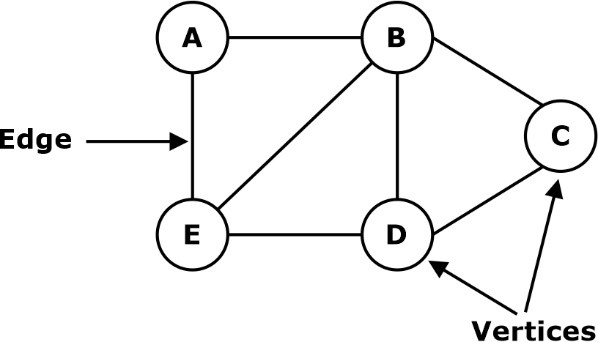Difference Between Tree and Graph
By BYJU'S Exam Prep
Updated on: September 25th, 2023

The Difference Between Tree and Graph is that a cycle can be represented in a graph, whereas in trees, there is no cycle representation. This article explains the difference between graph and tree; we will discuss various parameters based on which these two data structures differ. Graphs and trees are non-linear data structures that store, traverse and retrieve data. Though the two data structures still perform exactly the same task, the difference between the graph and tree exists.
Difference Between Tree and Graph PDF
Apart from discussing the major difference between Tree and Graph, we will also learn about the two data structures individually, how they are used to store data, how to find an element stored in them, what is the basic difference and which among the two is preferred most. Let’s understand each one individually in the sections given below.
Table of content
Difference Between Tree and Graph
Trees and graphs are useful in programming because they depict nonlinear data. A tree is an exception to the rule of graphs because it does not loop, but graphs can. Both the graph and the tree have certain similarities, but they also have some distinctions. It is an essential topic in the GATE CSE syllabus. In the table below, let’s look at the difference between a tree and a graph.
Key Differences Between Tree and Graph
|
Graph |
Tree |
|
The graph is a non-linear data structure. |
The tree is a non-linear data structure. |
|
It is a collection of vertices/nodes and edges. |
It is a collection of nodes and edges. |
|
A node in a graph can have any number of edges. |
A tree consists of nodes having any number of child nodes, while a binary tree has at most two child nodes. |
|
There is no unique node called the starting node in a graph. |
There is a unique node called root in trees. |
|
A cycle can be present in a graph |
No cycle can be present in a tree. |
|
Applications: The graph is used to find the shortest path in networking. |
Applications: The tree data structure is preferred for game and decision trees. |
What is a Graph?
The graph is a non-linear data structure. It is a collection of nodes and edges where V represents the finite set, a non-empty set of nodes, and E represents the finite and non-empty set of edges. Graphs and questions based on graphs are seen vividly in the GATE question paper. The key points to represent a graph are:
- Nodes are nothing but the vertices of the graph.
- An edge E connects two adjacent nodes
- Any graph is denoted by G={V,E}
For example:

What is a Tree?
A tree is a non-linear data structure. It is also referred to as an acyclic graph i.e a graph with no cycles present in it, this is one of the basic differences between a graph and a tree. A tree is a finite set of one or more nodes such that:
- A tree has a special node called the root node.
- The rest of the nodes are partitioned into disjoint sets T1, T2,… Tn where T1, T2,…. Tn is called the subtrees of the root.
For example:

Applications of Tree and Graph
Graphs and trees are used in various searching and minimizing techniques over the web. This is an essential topic as per the GATE exam as well. The graph data structure is used to minimize the cost from one end to another end, finding the shortest distance between two points/ nodes. The tree data structure is used in the binary search tree, and hierarchal trees and organizing trees are also used in gaming and related fields.
Further, let us see some other related articles.


